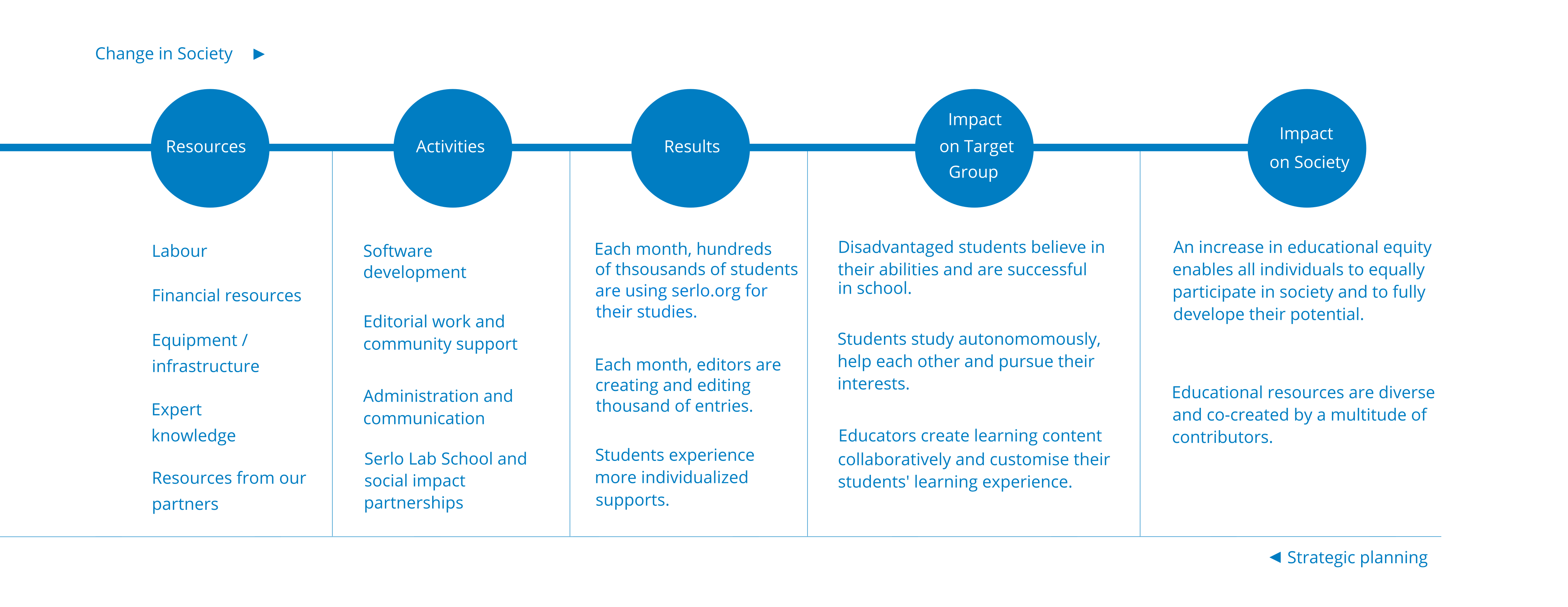Our Impact
Education is one of the most important factors in determining future success. Everyone should have the same opportunity to receive an education and pursue his or her talents and interests!
On the whole, financially-disadvantaged children have less access to education. 'Impact' describes what we want to improve for this target group and society as a whole. For example, we encourage interest in subjects, like math, which are crucial for many career paths, but with which many students also have problems. The learning materials we provide allow for independent learning, thus helping students to help themselves. Our target audience develops a positive attitude towards learning and cultivates his or her own educational aspirations and goals. In the long term, we help ensure that all students finish school successfully and find personal and professional fulfillment.
Our Impact Logic
The following graphic describes our impact goals and our approach to reaching them. We also broke down in detail the problems we are addressing, our target groups and the change in behavior we seek to affect with our activities in each of them.

The Problem
Educational inequality is a worldwide issue: virtually all public school systems around the globe are based on a teacher-centered learning approach. This means that a group of students learns the same topic at the same pace with the same teaching method. In consequence, worldwide parents spent 63.57 billion on private tuition in 2016 and the tutoring industry is expected to surpass $100 billion by 2018 (Global Industry Analysts, 2016). It is therefore not surprising that the educational prospects of a child depend heavily on the parents' income (PISA, 2015). Children from disadvantaged background are therefore more likely to underperform at school and, in turn, have worse job prospects and a higher risk of perpetuated poverty later in life.
Our Impact Goals
Target group 1
High School Students from low-income or non-academic households.
Target Group 2
All high school students.
Target Group 3
Teachers, undergraduates who are obtaining a teacher's degree, and people who volunteer as educators.
Reach
The number of individuals, that we reach with our activities, gives an indication of the impact that we can have on our target group and which impact-potential Serlo Education has for the future.
Activity | Use per time |
|---|---|
serlo.org | 1.257.000 users per month (as of November 2020) |
Serlo university mathematics | 254.000 users per month (as of November 2019) |
Total reach
The total number of users Serlo Education reached in a given month:
Monat | Total reach |
|---|---|
November 2020 | 1.512.000 users |
November 2019 | 1.076.481 users |
November 2018 | 994.066 users |
November 2017 | 808.868 users |
November 2016 | 483.486 users |
November 2015 | 282.459 users |
November 2014 | 125.450 users |
November 2013 | 98.745 users |
November 2012 | 22.806 users |
November 2011 | 499 users |
Impact on Target Audience
Feedback
We regularly receive feedback from our users which can be found at serlo.org/testimonials.
To learn more about how students work with serlo.org - and how we can improve their experience - we have created the Serlo Lab School. In the Lab School, we can observe close-up how students use serlo.org for their studies.
This content is licensed under
CC BY-SA 4.0 → Info
